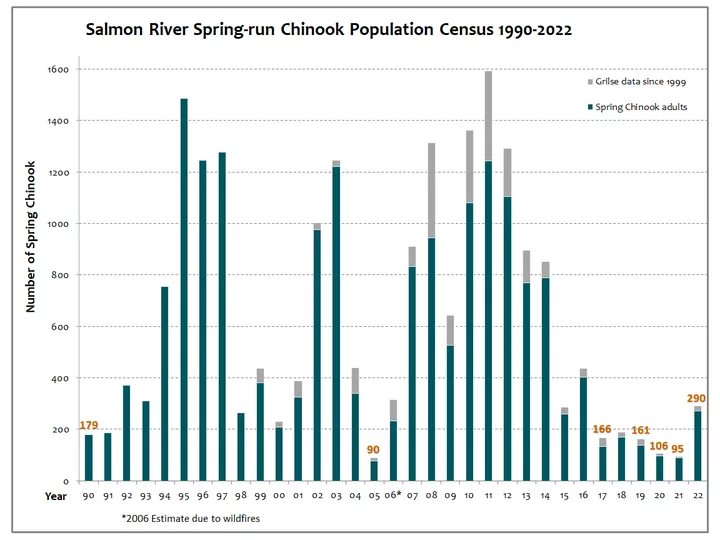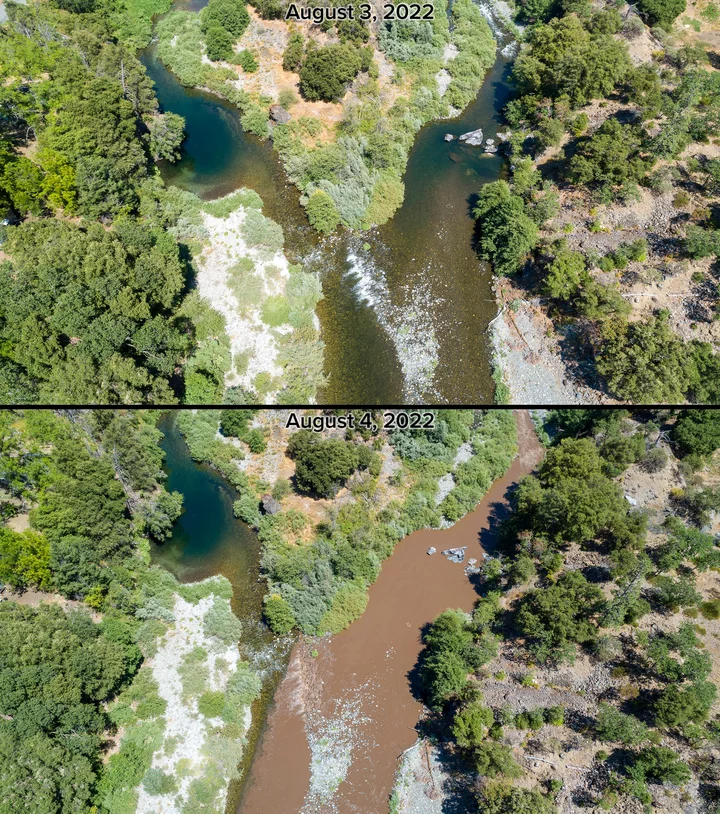Spring salmon census numbers over time, via the Karuk Tribe. Click to enlarge.
Press release from the Karuk Tribe:
This year, 290 wild spring Chinook salmon made the 85-mile trek up the Klamath to find cool mountain waters for spawning. While this is still far below average, it is more positive than last year’s dismal count of 90 fish. Celebrations were short-lived, however. Soon after the numbers were finalized, torrential rains hit the area. This led to flash floods in burn scars from last year’s wildfires, filling the South Fork Salmon River with silt, wood, and other debris, dropping the dissolved oxygen in the water to dangerous levels, and threatening all species of fish in the river.
This turn of events is particularly painful to a community struggling to keep a positive attitude about this year’s numbers. Runs of spring Chinook in the Klamath Basin that once numbered in the hundreds of thousands now teeter on the brink of extinction, with the Salmon River serving as one of the last spawning strongholds for the entire population.
“I have watched the numbers of these fish steadily decline in my lifetime, and it feels like we are at a breaking point,” said Karuna Greenberg, SRRC’s Restoration Director. “The State approving our petition to list Springers as an endangered species was a good start, but this event underscores the need for a holistic approach to habitat restoration and highlights how important better fire management is to the wider ecosystem.”
A similar situation is happening on the Klamath River, where flooding hit the active McKinney Fire area upstream of Happy Camp CA and almost instantly filled the mid-Klamath with ash and mud. While the fish kill in that region doesn’t affect spring Chinook, it has killed tens of thousands of juvenile coho, fall Chinook, lamprey, suckers, and trout.
“This is all so painful to witness,” said Troy Hockaday, Karuk Tribal Council Member, and Traditional Fisherman, “I worry more every day that my children and grandchildren won’t have the ability to harvest fish for their families; salmon have been a part of our subsistence, culture, and ceremonies for thousands of years, it can’t end here.”
Before and after the mudslides. Photos: Scott Harding.


CLICK TO MANAGE